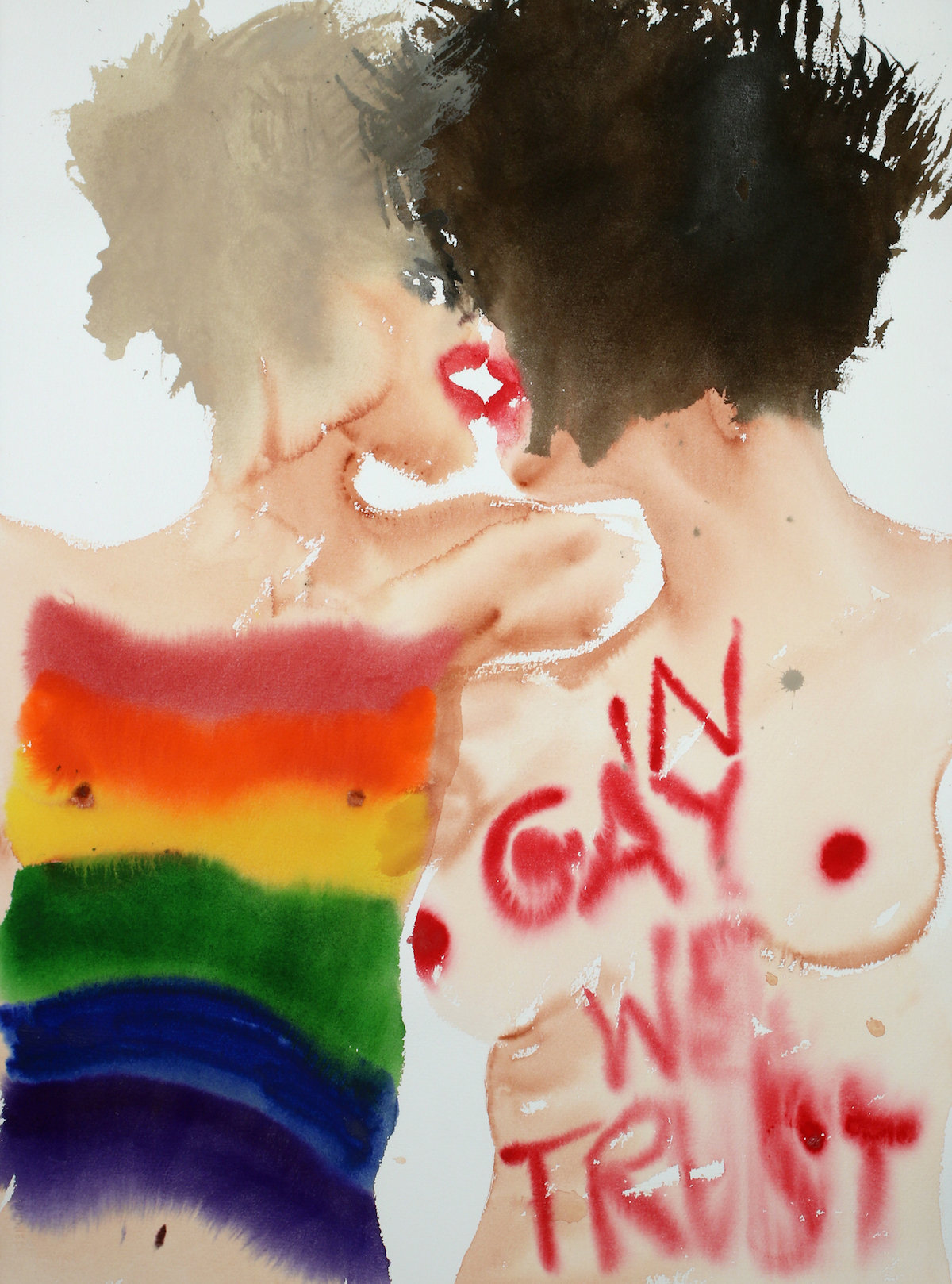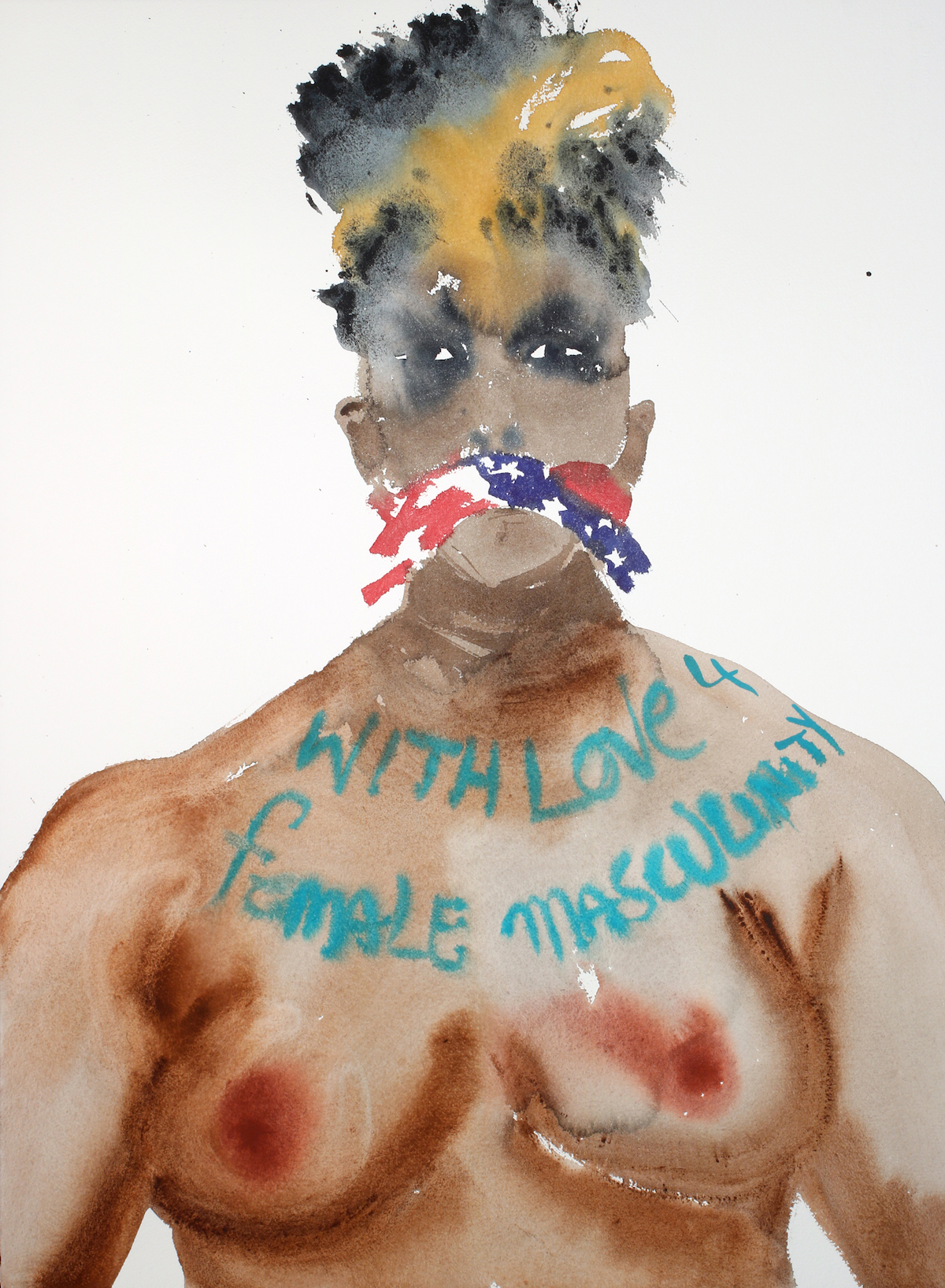
The malleability of paper makes it a seductive surface, especially for artists tackling the complex issue of female identity. Sexuality and cultural hybridity are as old as the human species itself, but now we are questioning these things more than ever. Are we women first, or are we defined by our culture? What informs how others see us? Should we even care? We could get lost in this torrent of considerations. Women could feel worn down by the shifting expectations that every society places on them and their bodies. But instead, complex narratives are fuelling the new feminism. Through art, women are fighting back against cultural, racial and gender stereotypes and hackneyed ideals of femininity.
The body is the battleground for every woman exploring identity. For New York based artist Firelei Báez, skin, and its similarity to paper, is an important part of her work. Its organic surface reacts to the environment, expanding and contracting with humidity or dryness, and it is this physicality that makes it the perfect basis for her practice. Báez was born in the Dominican Republic and investigates race and resistance in the Caribbean and north and South America, making intricate paintings that incorporate collage to give voice to alternate histories – those stories that never made it into the textbooks.
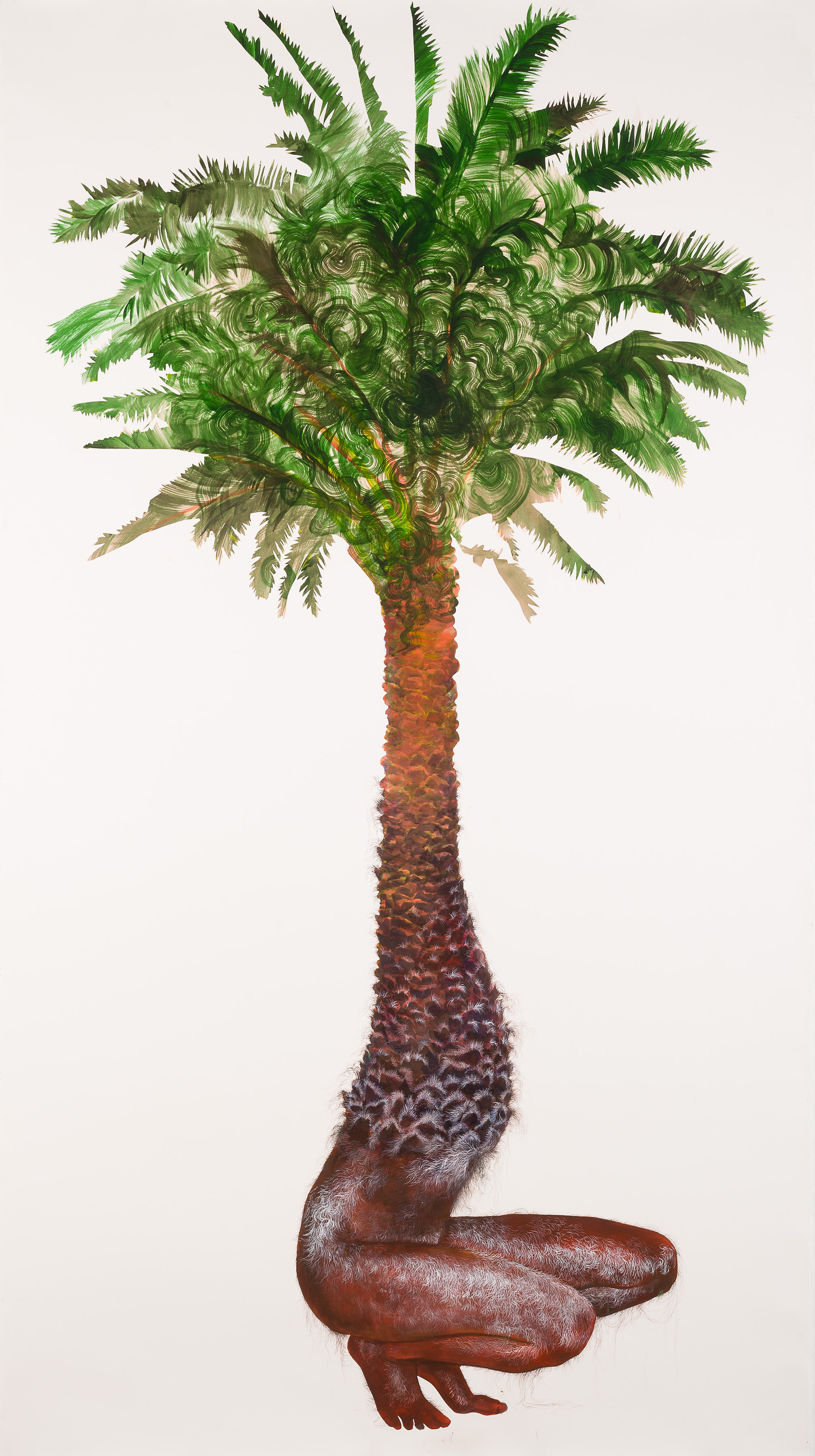
Wanderlust demanding recompense, Firelei Báez, 2016 Courtesy of the artist and Gallery Wendi Norris, San Francisco
For two years she painted self-portraits, capturing only two elements of her identity. The first was a single colour––taken from the inside of her forearm––and the second was the silhouette of her hair. This project was a reference to colonial-era tests used to determine degrees of “whiteness” within black communities. The resulting paintings are a strange series of skin-coloured masks that highlight the superficiality of reducing a person down to arbitrary characteristics. She also references myths from the Caribbean in her work, like that of the Ciguapa, a nocturnal creature from Dominican folklore, which takes female form and preys on wayward men. Báez’s own versions of these mythical women have legs covered in soft, silky fur and palm trees for bodies. She describes them as a “personification of romanticized western notions about the tropics.”
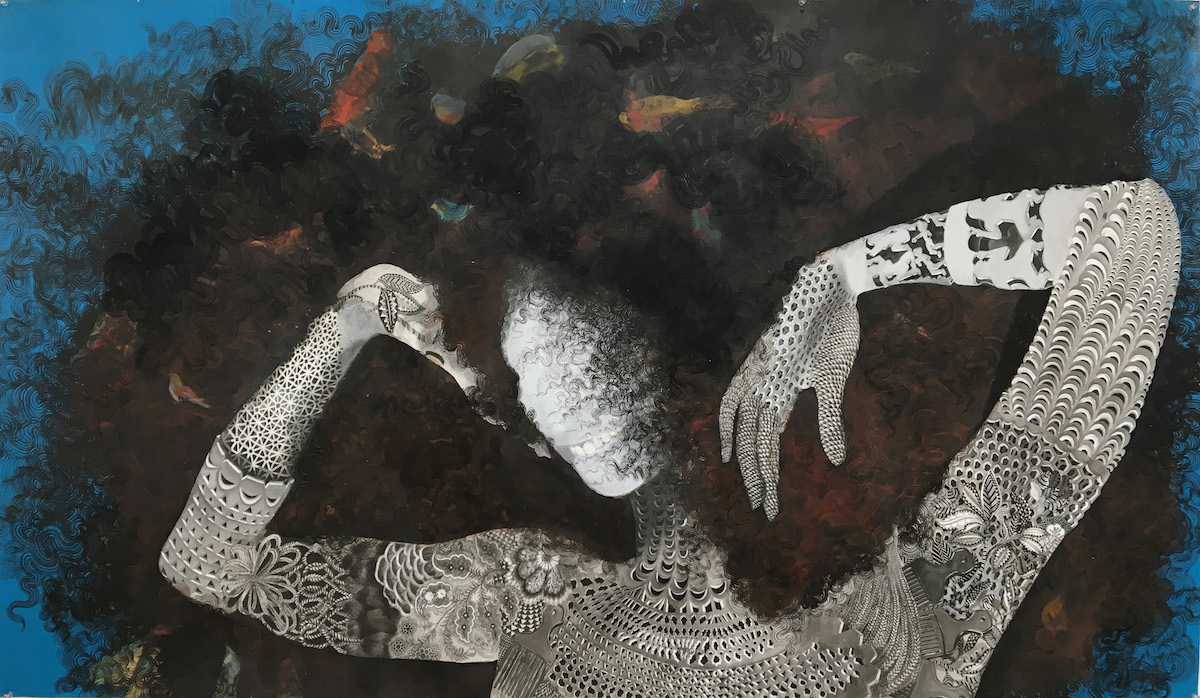
Nigerian artist, Taiye Idahor uses personal adornment in her work to explore the position of women in society. Pen-drawn black hair blooms among strings of red coral beads and paper braids. The beads—traditionally worn by Bini royalty—are a symbol of distinction and a marker of identity. Plastic versions are now worn by brides, and this imitation raises questions about the extent to which power is accessible to women. Idahor’s surreal floating “portraits” are faceless; the beads curve around invisible heads and chests. She never knew her maternal grandmother but she inherited her hair, and so her work reflects this gap in her life, while also celebrating her female relatives. But the voids left in these images also speak of the fact that in Nigeria, as with the majority of the world, women are largely absent from true positions of authority.
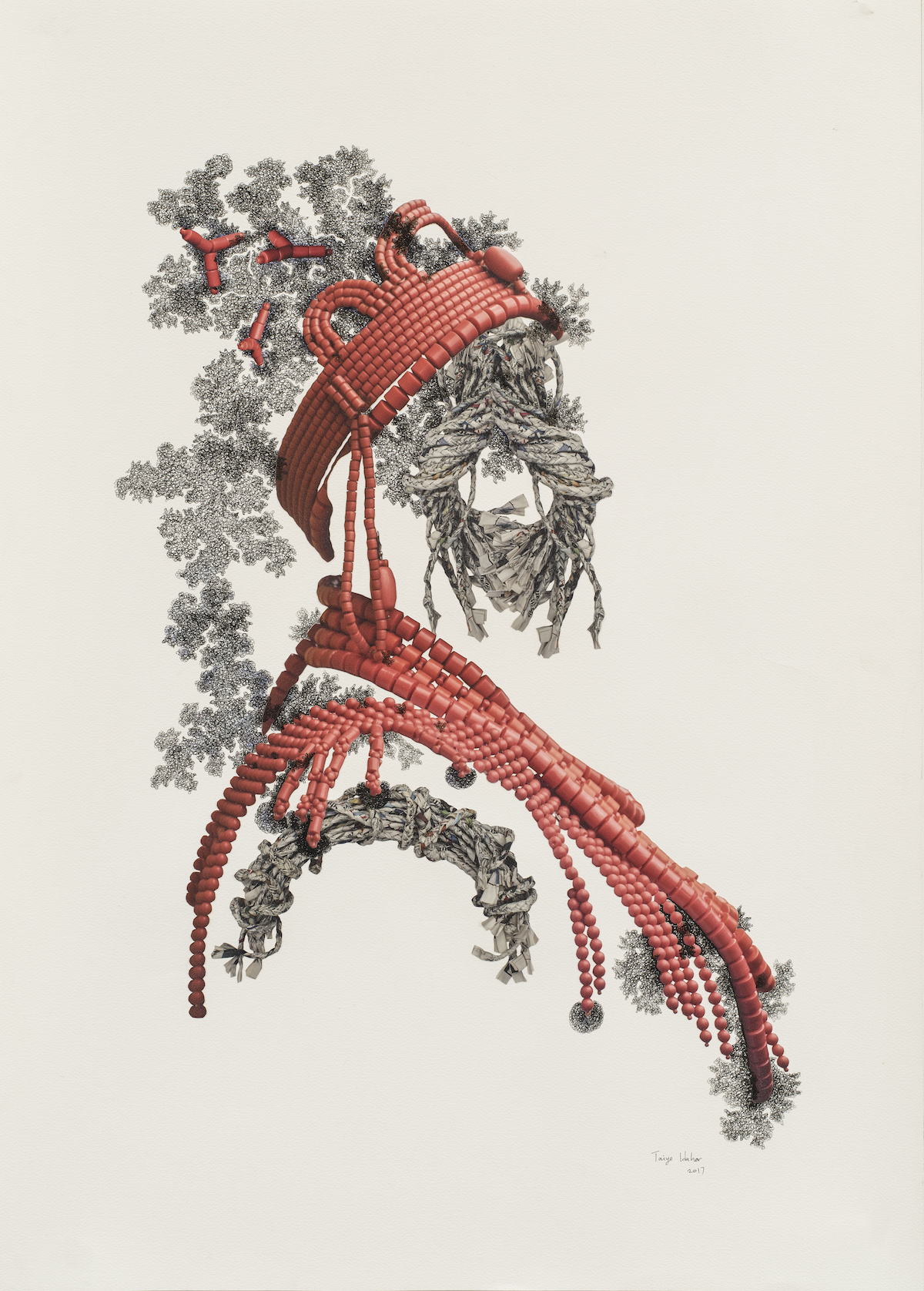
Brooklyn-based artist Wangechi Mutu works in a range of media, including sculpture, installation and video, but she is perhaps best known for her collages. She pastes images from pornography, fashion magazines and scientific texts onto vinyl, combining them with feathers, beads and Kenyan soil to create fantastical worlds populated by dangerous-looking hybridised females. These collaged creatures are part human, part animal, with mechanised appendages. They curl and writhe, in surreal landscapes like sirens of a mythical sea or demons of the underworld. They are alluring and frightening, like goddesses of sex and death.
“These images chime with the female solidarity of the “Me Too” movement and the women in them raise their arms, and sometimes a middle finger, calling out injustice.”
Born and raised in Nairobi, Mutu moved to Brooklyn via Wales, and these transitions have influenced her imagery. Stereotypes of black women, and ignorance surrounding the cultures of African nations, have informed the evolution of these turbulent, personal mythologies. They speak as a critique of exoticism, colonialism, war and gender, while exuding strength and defying categorisation. Mutu’s figures refuse to conform and cooperate. They cannot be tamed or named, and as such, the historical narrative of the woman as an irrational, hysterical being, closer to nature than man (and the more dangerous for it) is both challenged and exploited.
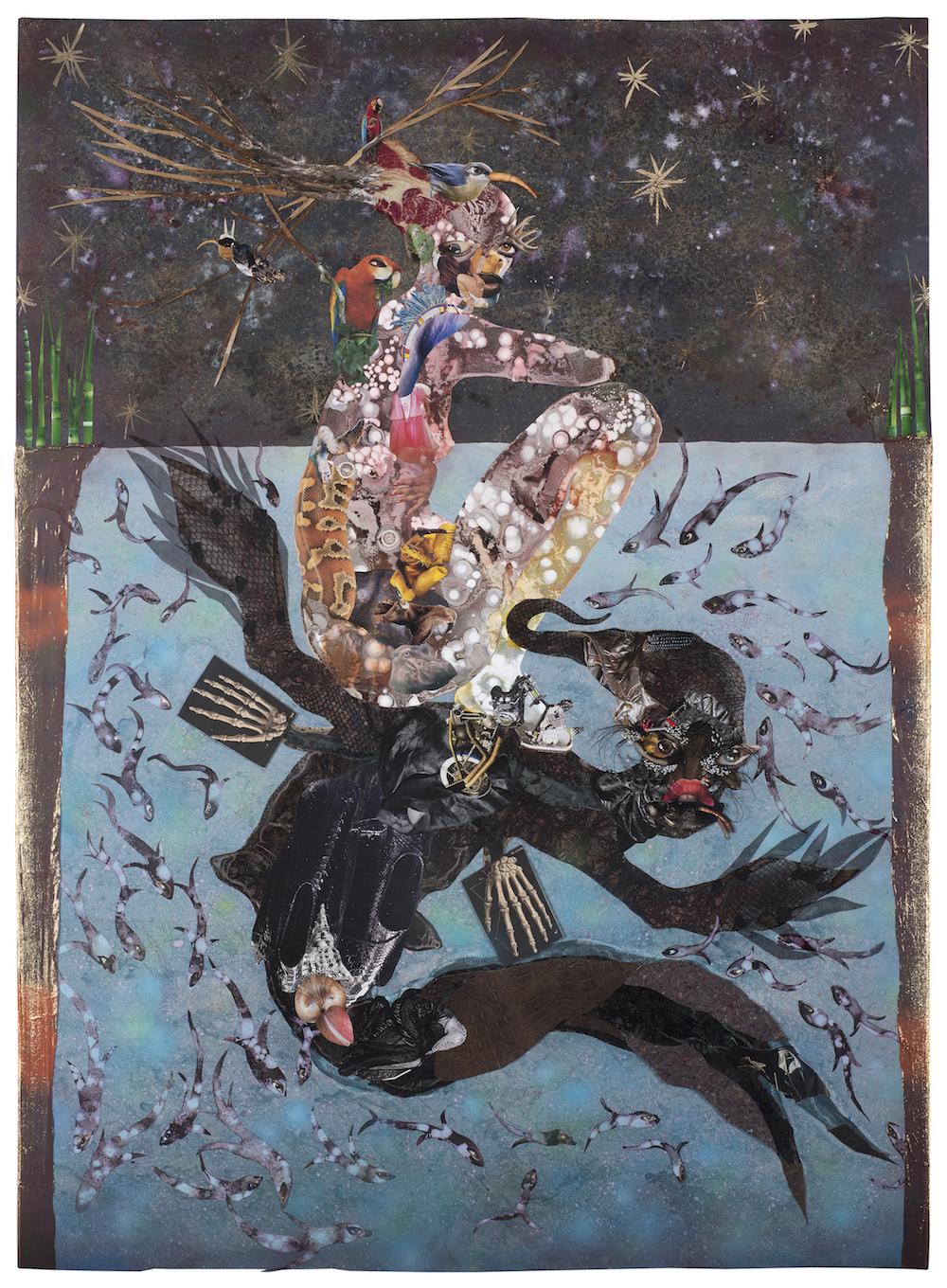
Canadian artist Nadine Faraj takes pornographic images and transforms them from cold objects of lust into warm, melting bodies of bright watercolour. Hers is an optimistic, sometimes humorous, take on the nude, which returns a humanity to the objectified flesh of woman. But Faraj’s recent series, entitled Naked Revolt, bares a more overt message than these earlier, almost abstract watercolours. She paints topless women in a multitude of bright colours: blue, pink or green, as well as a variety skin tones and writes messages of protest across their chests: “make love, not wall,” “my pussy, my rules,” “still not asking for it.” These images chime with the female solidarity of the “Me Too” movement and the women in them raise their arms, and sometimes a middle finger, calling out injustice. This is an international cast of women—a global outcry—each painted as an individual with agency and strength. They could be real people on a march, baring their breasts as many have done since the 1960s in defiance of, and protest against, societal norms that result in discrimination.
Paper allows artists to tear up the rulebook, to create their own individual identities beyond the parameters set down by the cultures they find themselves accountable to. Paper offers the opportunity to pick and choose from the quagmire of popular culture, to write new histories and critique the old ones. It absorbs bleeding paint and blurs the lines of the female form. Its fragility is turned into strength, and that strength takes the form of the female body.
